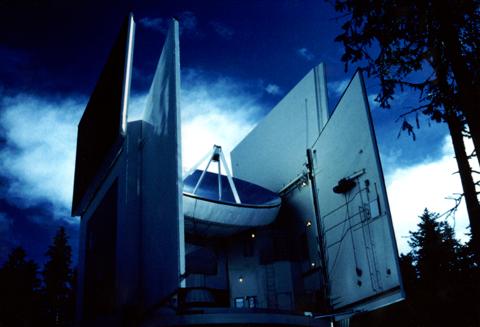









Planning an observing run
There are a number of online services you may wish to consult when planning an observing run at the SMTO. When applying for time at the SMTO, you will want to download a SMTO Proposal Summary Sheet.
For LaTeX you also will need the SMTO logo PS file and psfig.sty if it is not installed on your computer already.
The proposal consists of the cover sheet, a brief scientific justification (not more than 3 pages), and the source list with required observing times and time justification.
To assist in writing a good SMTO proposal, you will probably want to consult the SMTO Specifications page for instrument availability and sensitivity specs.
Preparing for the Run
In preparation for your run at the SMT, you should take the time to read the
many chapters of the SMTO User's Manual.
In October 2000, we released version 6.4. The only changes compared to
version 6.3 (March 2000) can be found in Chapter 4:
"Bolometer observations", which was updated following our
increasing experience with the new
19-channel bolometer array.
Since the whole manual is more
than 7 MBytes in size and has more than 350 pages, we provide also the
individual chapters as Postscript and
g-zipped Postscript files.
You may prefer to look at the HTML Version
of the SMTO User's Manual instead.
Emerald Peak lies in an environmentally-sensitive area,
so mountain travel clearance
requires a little more forward planning than, say, a trip to the NRAO
12-meter. You should have a look at the MGIO
Observer's Checklist
before your observing run.
You may also find it helpful to print out a few copies of this
sample
SMTO Observing Log Sheet for your observations.
Getting to the site
If you are new to Arizona, the following basic map of Tucson may prove useful. Once headed east on Interstate-10, you will pass the small cities of Benson and Willcox before reaching the US Route 191 NORTH exit towards Safford (exit 352). Bearing north, you will gradually climb among mid-altitude desert grassland for about 25 miles before reaching the Swift Trail (Route 366) turnoff. You will likely find this map of the Safford area (courtesy of Larry Wilson) helpful. The MGIO base camp is 1/2 mi (1 km) from the Rt 366/Rt 191 intersection, on the right side of the road, across from the glittery fenced confines of an Arizona State Penitentiary :-o. Be sure to sign in here and pick up your permits and get updates on the road conditions ahead.
Once on your way up the hill, relax and enjoy the spectacular views. Travel time to the SMTO from the base camp is 50-60 minutes under good conditions. When the paved road gives way to gravel, you are about 7 miles from the access road turnoff. In about 2 miles, upon reaching Hospital Flat, a popular camping site, you are exactly 4.9 miles from the MGIO turnoff. There are no signs marking the access road junction, so be wary! You may find this topographical map of Emerald Peak + vicinity (also courtesy of Larry Wilson) useful. Upon reaching the access road, be sure to get on the SMTO radio repeater (channel 1 on the hand-held SMTO transceivers) and ask if there is any downhill traffic on the (one lane) access road. If not, then state your intentions and carefully head up the hill. In 2 miles, the towering structure of the SMT will pop out from behind a thick coverage of trees.
Controlling the telescope
Basic operation of the telescope is done from a VMS-based VAXStation, running
the control interface program OBST. You will find it useful to grab a copy of
the
OBST control documentation before venturing
too far (preferably before leaving for the mountain).
As far as observing procedures are concerned, we have implemented
Spectral Line On-The-Fly Mapping at the SMT;
a manual is available in HTML and Postscript form.
Basic reduction of data
taken with the telescope may be done with CHEF on site; have a look at the
CHEF documentation provided here for assistance.
While observing at the SMT is more user-intensive than at many
operator-assisted telescopes, you have a great deal more latitude in how you
structure your observations. There are usually one or
more SMTO staff members on site however.
An intercom and on site phone system
allow you to readily reach anyone else at the SMTO.